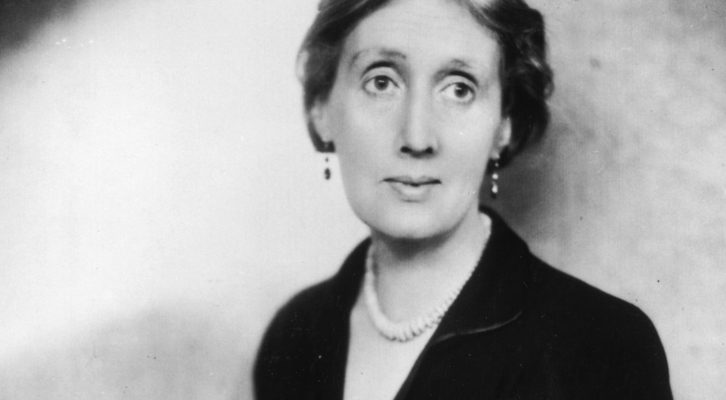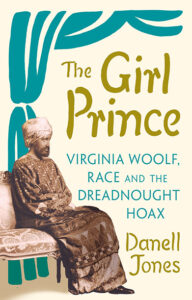
What Virginia Woolf’s “Dreadnought Hoax” Tells Us About Ourselves
Danell Jones Grapples With a Beloved Author’s Casual Racism
I first read Virginia Woolf’s novels in the early 1980s as a visiting undergraduate at the University of Sussex, its campus nestled in the South Downs just seven miles from Monks House, Woolf’s country home in Rodmell village. Since then, I have been fascinated by her pacifism, and by the veterans, shell-shocked soldiers, and war dead who haunt her books.
In Mrs. Dalloway (1925), I am drawn not to the tinselly Clarissa, but to the brain-fissured Septimus Warren Smith. Each time I read To the Lighthouse (1927) I am once again shocked by World War I encapsulated in square brackets. In Jacob’s Room (1922), it is the dismay of a mother cradling an empty pair of her dead son’s shoes that chokes me up. Writing about the Dreadnought hoax seemed the natural extension of my long admiration for Woolf, the pacifist.
The Dreadnought hoax took place on a cloudy afternoon in early February 1910. Woolf—then the unmarried 28-year-old aspiring novelist Virginia Stephen—joined her brother and friends in a practical joke on the British Navy. Putting on blackface makeup and theatrical costumes, they went aboard the nation’s most famous battleship, the H.M.S. Dreadnought, posing as African princes.
Incredibly, they got away with it. When the story of the stunt was leaked to the press, it made headlines around the world for weeks, embarrassed the Royal Navy, and even provoked heated discussions in parliament. Exactly what the hoax meant has been debated ever since.
When I first read about the Dreadnought prank in the waning decades of the twentieth century, it was celebrated as Woolf’s cheeky act of defiance targeting militarism, empire, and patriarchy, a perfect skewering of war mongers and their war machines. It seems impossible to believe now, but there was little concern that the young Virginia Woolf boarded the formidable warship wearing blackface make-up as she masqueraded as an African prince, an act of unthinkable offensiveness. The past, they say, is a foreign country. What they don’t tell you is how even your own past can feel like a bewildering, inexplicable land.
We don’t seem to know how to deal with the lives and the works of writers who are at once revolutionary and deeply flawed.
After the racial reckoning of the last twenty years, it is impossible to look at the hoax as merely an audacious pacifist prank. No serious writer can ignore the racist attitudes at its core.
Once I realized that I needed to see Woolf’s life afresh, to reimagine it in the context of Black British history, my view opened to a host of extraordinary individuals invisible to traditional approaches. I found that Woolf’s Bloomsbury neighborhood was home to many Black people, some of whom would go on to play crucial roles in the dismantling of empire. I discovered that her personal history was intimately connected to a nineteenth-century Ethiopian prince ripped from his homeland by a British general and brought to England to live out what would be a short, unhappy life.
I also realized that her blackface masquerade linked her to the exploits of a Jamaican swindler who impersonated African royalty and became something of a folk hero. As I spent time exploring the rich world of Jamaicans living in early twentieth-century London, I also understood that the redoubtable Caribbean writer Una Marson’s play London Calling was, in fact, a rewriting of the Dreadnought stunt as an anti-imperialist, anti-racist comedy. As I researched, I saw that telling the story of the hoax was inseparable from talking about the lives of Black people in Britain.
As I worked, I found a wealth of materials describing the prank, including naval memoranda, newspaper stories, interviews, photographs, telegrams, letters, and memoirs. There were innumerable retellings in newspapers, popular magazines, Wikipedia, YouTube, Facebook, and all manner of blogs and podcasts. The practical joke even played a bit part in an episode of the hit television show Downton Abbey. It seemed as if nothing could be easier than to describe what had taken place.
And yet, once I started digging into the historical documents, I discovered that nearly every account I had read about the hoax was wrong including, amazingly enough, Woolf’s own. Since 1910, writers—even those who were there—have misconstrued the most basic facts: the day it occurred, who was being impersonated, even the top-secret status of the Dreadnought.
There were times writing this book when no one could have been more afraid of Virginia Woolf than I was. As I reread her diaries, I delighted in her wit and thrilled at her brilliant insights even as I winced at her easy racist remarks, her cruel caricatures of her friends, and her sense of superiority over the people who had been so shortsighted as to be born into a lower class. Rereading her novels, some dazzled me all over again. Others put me to sleep.
Returning to her biography, I pitied her for the bereavements that darkened her youth, cringed as she covered her face with burnt cork, admired her work ethic in the face of recurring mental illness, envied her easy entrée into the literary world, and mourned her early death by her own hand. I thought about our desire as readers to place our literary heroes on pedestals because their books have moved us with their beauty and wisdom. We don’t seem to know how to deal with the lives and the works of writers who are at once revolutionary and deeply flawed.
Some people may argue that they should be discarded altogether. But if we do that, we lose the lessons that past lives offer. Could looking closely at the Dreadnought hoax, I wondered, and the stories we have been spinning about it for over a hundred years, tell us not only about this iconic writer and her world, but also about ourselves?
If Virginia Woolf had not put a stone in her coat pocket and walked into the Ouse on 28 March 1941 when she was 59 years old, it is possible she might have altered her bigoted ideas about race. In one of her last book reviews, she observed that even people of “genius and learning” have difficulty swimming against the current of their times. And while their genius and learning may “come downstream untouched,” as she put it, it soon becomes obvious that the social conventions which dictated their lives are “obsolete and ridiculous.”
Just as Woolf predicted, her talent, intelligence, and sensitivity have sailed downstream to us intact, and the racist conventions that bound and blinded her look obsolete, hateful, and absurd. Had she lived into her sixties, seventies, or eighties, would she have seen their absurdity, too? We will never know, of course. Death has made her unchangeable.
Yet Virginia Woolf’s writing can still be alive to us, revealing as it so often does that lives are a messy, confusing miasma of emotion and reason swirling around together and apart, blinding us, holding us back, or thrusting us forward toward our blunders and our triumphs.
__________________________________

Adapted from The Girl Prince: Virginia Woolf, Race, and the Dreadnought Hoax by Danell Jones and published by C. Hurst & Co. (Publishers) Ltd. in the UK and Oxford University Press in the US © Olga Onuch and Henry E. Hale 2023. Used by permission. All rights reserved.
Danell Jones
Danell Jones is a writer and scholar with a PhD in literature from Columbia University. She is the author of The Virginia Woolf Writers Workshop; the poetry collection Desert Elegy; and An African in Imperial London (also available from Hurst Publishers), which won the High Plains Book Award for Nonfiction.



















